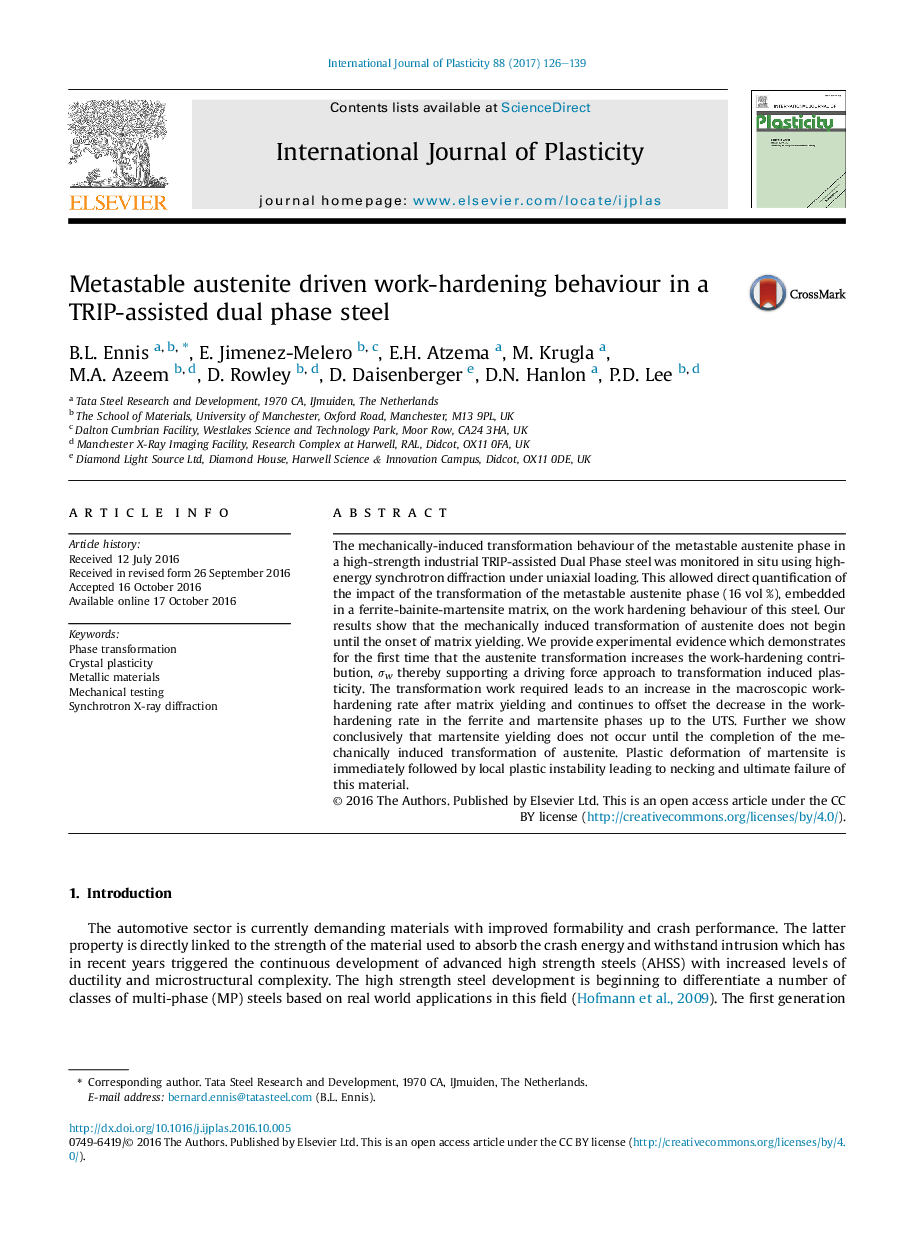| Article ID | Journal | Published Year | Pages | File Type |
|---|---|---|---|---|
| 5016821 | International Journal of Plasticity | 2017 | 14 Pages |
â¢New explanation for hardening mechanism in TRIP-assisted steel.â¢Work-hardening described by physically based model for pre- and post-yield behaviour.â¢Matrix yielding is followed by stress-assisted transformation of austenite to martensite.â¢Transformation hardening counters matrix softening and extends ductility.â¢Diffuse plastic instability occurs after austenite transformation is complete.
The mechanically-induced transformation behaviour of the metastable austenite phase in a high-strength industrial TRIP-assisted Dual Phase steel was monitored in situ using high-energy synchrotron diffraction under uniaxial loading. This allowed direct quantification of the impact of the transformation of the metastable austenite phase (16Â vol %), embedded in a ferrite-bainite-martensite matrix, on the work hardening behaviour of this steel. Our results show that the mechanically induced transformation of austenite does not begin until the onset of matrix yielding. We provide experimental evidence which demonstrates for the first time that the austenite transformation increases the work-hardening contribution, Ïw thereby supporting a driving force approach to transformation induced plasticity. The transformation work required leads to an increase in the macroscopic work-hardening rate after matrix yielding and continues to offset the decrease in the work-hardening rate in the ferrite and martensite phases up to the UTS. Further we show conclusively that martensite yielding does not occur until the completion of the mechanically induced transformation of austenite. Plastic deformation of martensite is immediately followed by local plastic instability leading to necking and ultimate failure of this material.
Graphical abstractDownload full-size image
